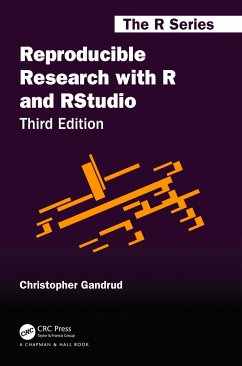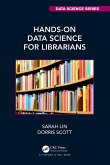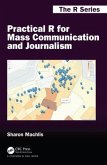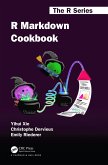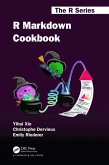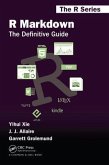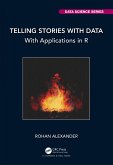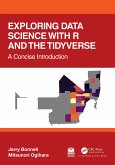Praise for previous editions:
"Gandrud has written a great outline of how a fully reproducible research project should look from start to finish, with brief explanations of each tool that he uses along the way... Advanced undergraduate students in mathematics, statistics, and similar fields as well as students just beginning their graduate studies would benefit the most from reading this book. Many more experienced R users or second-year graduate students might find themselves thinking, 'I wish I'd read this book at the start of my studies, when I was first learning R!'...This book could be used as the main text for a class on reproducible research ..." (The American Statistician)
Reproducible Research with R and R Studio, Third Edition brings together the skills and tools needed for doing and presenting computational research. Using straightforward examples, the book takes you through an entire reproducible research workflow. This practical workflow enablesyou to gather and analyze data as well as dynamically present results in print and on the web. Supplementary materials and example are available on the author's website.
New to the Third Edition
Updated package recommendations, examples, URLs, and removed technologies no longer in regular use.
More advanced R Markdown (and less LaTeX) in discussions of markup languages and examples.
Stronger focus on reproducible working directory tools.
Updated discussion of cloud storage services and persistent reproducible material citation.
Added discussion of Jupyter notebooks and reproducible practices in industry.
Examples of data manipulation with Tidyverse tibbles (in addition to standard data frames) and pivot_longer() and pivot_wider() functions for pivoting data.
Features
Incorporates the most important advances that have been developed since the editions were published
Describes a complete reproducible research workflow, from data gathering to the presentation of results
Shows how to automatically generate tables and figures using R
Includes instructions on formatting a presentation document via markup languages
Discusses cloud storage and versioning services, particularly Github
Explains how to use Unix-like shell programs for working with large research projects
"Gandrud has written a great outline of how a fully reproducible research project should look from start to finish, with brief explanations of each tool that he uses along the way... Advanced undergraduate students in mathematics, statistics, and similar fields as well as students just beginning their graduate studies would benefit the most from reading this book. Many more experienced R users or second-year graduate students might find themselves thinking, 'I wish I'd read this book at the start of my studies, when I was first learning R!'...This book could be used as the main text for a class on reproducible research ..." (The American Statistician)
Reproducible Research with R and R Studio, Third Edition brings together the skills and tools needed for doing and presenting computational research. Using straightforward examples, the book takes you through an entire reproducible research workflow. This practical workflow enablesyou to gather and analyze data as well as dynamically present results in print and on the web. Supplementary materials and example are available on the author's website.
New to the Third Edition
Updated package recommendations, examples, URLs, and removed technologies no longer in regular use.
More advanced R Markdown (and less LaTeX) in discussions of markup languages and examples.
Stronger focus on reproducible working directory tools.
Updated discussion of cloud storage services and persistent reproducible material citation.
Added discussion of Jupyter notebooks and reproducible practices in industry.
Examples of data manipulation with Tidyverse tibbles (in addition to standard data frames) and pivot_longer() and pivot_wider() functions for pivoting data.
Features
Incorporates the most important advances that have been developed since the editions were published
Describes a complete reproducible research workflow, from data gathering to the presentation of results
Shows how to automatically generate tables and figures using R
Includes instructions on formatting a presentation document via markup languages
Discusses cloud storage and versioning services, particularly Github
Explains how to use Unix-like shell programs for working with large research projects
I recommend this book for students studying statistical sciences, individuals beginning their research career, and advanced researchers looking to up their reproducibility game. I am thrilled to have this resource for my own lab and indent on having my students follow the recommendations within closely.
- Lucy D'Agostino McGowan, Biometrics, 2020, Volume 76, Issue 4
In summary, I found this book to be a very good introduction to R and reproducible research, one that I can certainly recommend.
- Anikó Lovik, International Society for Clinical Biostatistics, June 2021 Number 71
- Lucy D'Agostino McGowan, Biometrics, 2020, Volume 76, Issue 4
In summary, I found this book to be a very good introduction to R and reproducible research, one that I can certainly recommend.
- Anikó Lovik, International Society for Clinical Biostatistics, June 2021 Number 71

